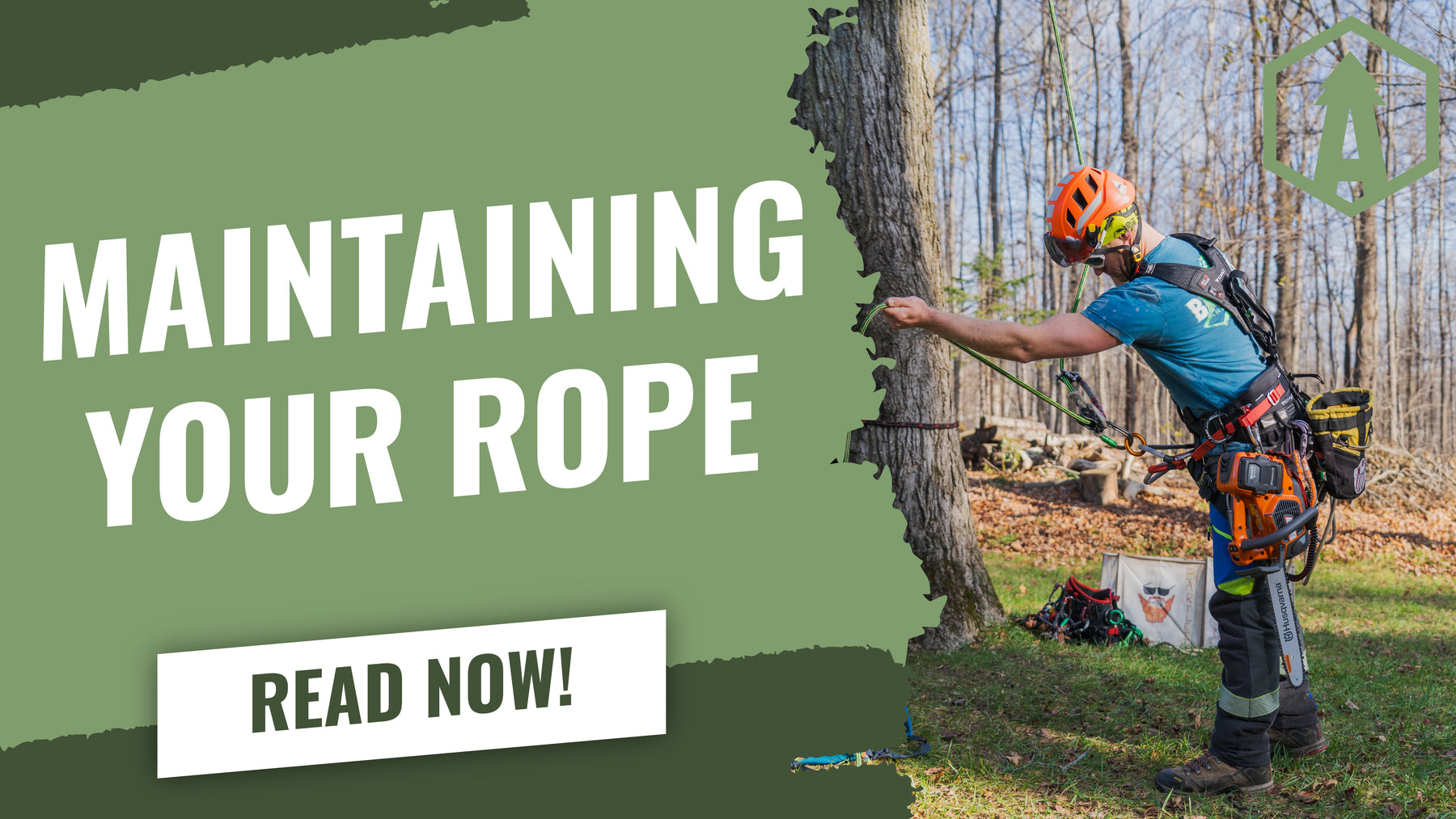
We need it! A guide to maintaining your rope.
Arborist ropes play such a crucial part in the tree care industry. Whether you’re scaling majestic trees for work or pleasure, the safety and longevity of your equipment depend on proper maintenance. In this guide, we’ll walk you through simple yet basic steps to keeping your tree climbing ropes in optimal condition, ensuring both safety and durability. As with any tool in any industry, there is a maximum lifespan set by the manufacturer, however ropes may not last their entire “lifespan”. A variety of factors will dictate the longevity of your ropes, both rigging and climbing; storage, usage, dirt, chemicals, and/or if it has been subjected to shock-loading.

Inspection
Before you dump your rope into a tub or washer, carefully inspect your rope for signs of damage; you may find the rope is compromised and is no longer safe to climb trees or rig with. This may save you from spending unnecessary time and material cleaning something that won’t ever get used again.
- Visually inspect your rope to identify areas that have been burnt, glazed, discolored, and/or frayed. Discoloration could indicate a heavy shock, exposure to chemicals, or from baking in the sun for a prolonged period of time.
- Get personal with your rope. Run the entire length of the rope through your hands; doing so will let you feel for any outer or internal imperfections. Cuts, abrasions, puffed fibers, things of that sort. If you reach a point at the rope where the diameter has changed, this could mean the core has been severed or damaged and can warrant removing the rope from use.
- Spliced eyes may become worn-out after continued use and a fatiguing of fibers. Ensure that the lock stitching is still present; if it is missing, the possibility of the splice backing out of the bury increases.
- Now, there may be different checklists to hit when it comes to inspecting cordage but remember one thing, if you are questioning the integrity of the cordage, you’re better off replacing it and not risking it for the biscuit.

Begin the Clean
Arborist ropes get run through the ringer in all types of conditions and they’re going to get dirty, it’s only natural that they do. If they didn’t, are you actually working!? Washing ropes is recommended when they have become extremely soiled and it begins to hinder how your climbing device functions, especially when it has been exposed to coniferous trees. Something else to keep in mind, when dirt works its way between the fibers of the ropes, it can act like sandpaper/knife and begin to degrade or sever fibers over time.
- Remove dirt and debris – if your rope isn’t caked with mud or sap, shake the dirt off the rope.
- Prepare your cleaning solution – generally, you want to stick to the manufacturer’s recommendations for the appropriate cleaning solution (e.g. Teufelberger Scrubba) or stick with plain water. Apart from that, if you plan to clean your rope at home, by hand, prepare your tub or a large tote (preferably the tote as to not piss anybody off) with lukewarm water. Use a soft bristle brush to clean the rope once it has soaked in the water. You may have to repeat the process a few times depending on how soiled it is. Avoid harsh chemicals or solvents, it may damage the integrity of the rope. If you plan to wash the rope in a washing machine, use a mesh rope bag to contain the rope and use a washing machine that does not have an agitator. The agitator may twist the fibers or damage and the machine may break.
- Rinse thoroughly – After soaking, thoroughly rinse the rope with clean water to remove the remaining cleaning solution. Ensure the soap residues are washed away.
- Dry your rope – hang dry your rope, or preferably, lay the rope flat in a cool, dry place, away from sunlight and chemicals. Wait for the rope to dry completely before storing. Do not tumble dry your ropes.
- Remember, wet or muddy ropes can cause strength loss. Avoid washing your rope continuously; washing may cause some strength loss but can vary depending on the cleaning solution used. Ultimately, if you would like to avoid the rope washing procedure, invest in a friction saver and consider adding a chafe sleeve to your work positioning lanyard.
It’s easy for us to overlook inspection and maintenance with our ropes, whether it be climbing or rigging, but we have to make time to do so. Investing time in the maintenance of your climbing/rigging ropes is not just about preserving equipment; it’s about ensuring your safety every day. Regular inspections, proper cleaning, storage practices, and attentive use are the pillars of effective maintenance. By following simple guidelines, you’ll not only extend the life of your ropes but also enhance the overall safety on the job. Climb Safe!

Leave a comment